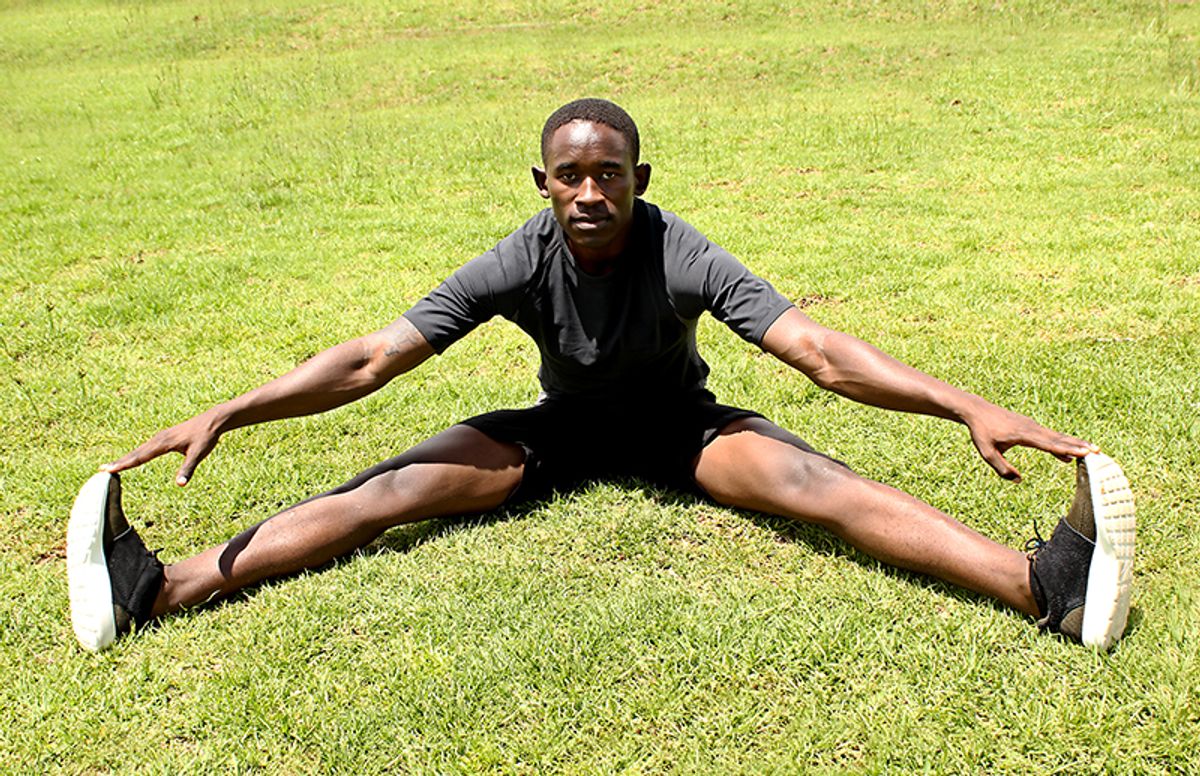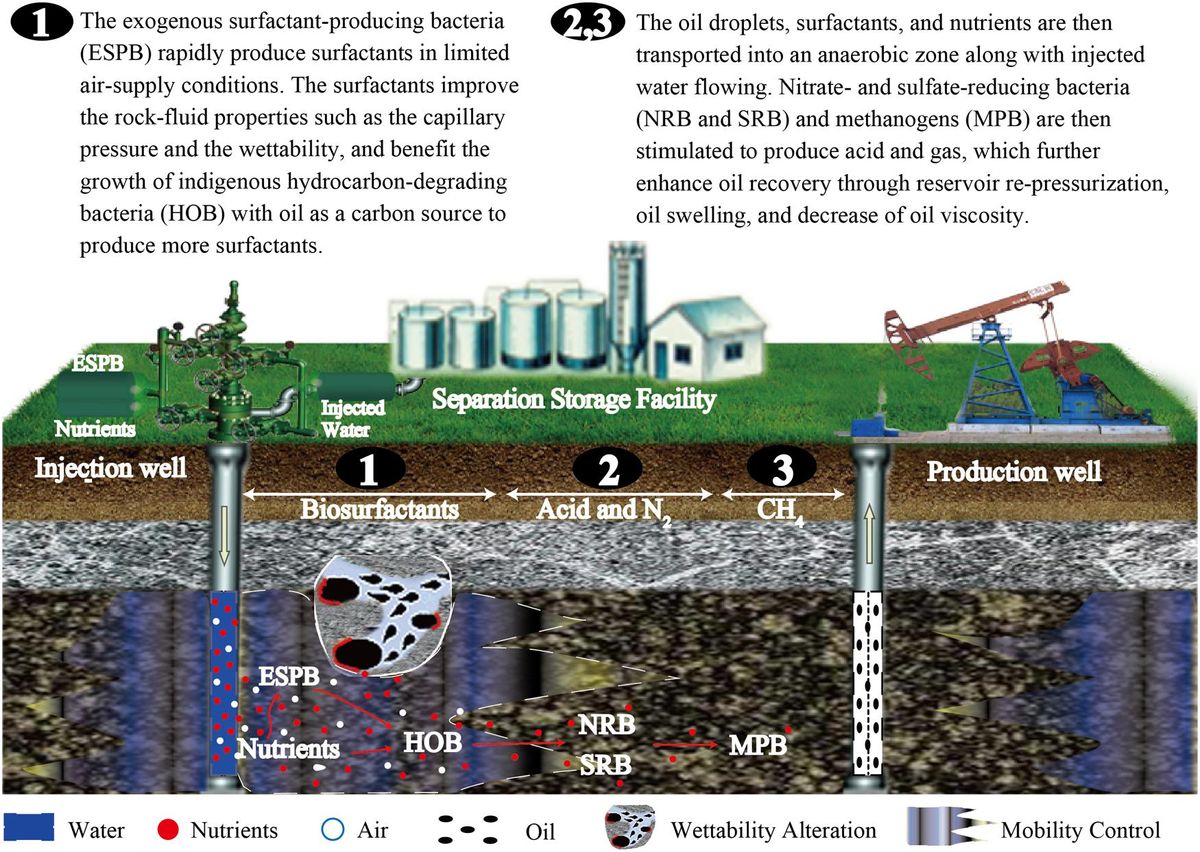
From Strained to Sustained: Recovery Steps After a Hard Workout
Feeling the Burn? Let's Cool It Down

The Magic of Post-Workout Stretching
Ever wondered why stretching after a workout feels so darn good? It's not just in your head; there's real science behind the relief. Stretching helps to alleviate muscle tightness, improve flexibility, and can even accelerate recovery time. But not all stretches are created equal.
Dynamic stretches are your go-to right after a workout. They keep the blood flowing and help your muscles cool down gradually. Here's a quick list to get you started:
- Leg swings
- Arm circles
- Torso twists
Remember, the goal is to feel a gentle pull, not pain. If it hurts, you've gone too far.
Static stretches come next, once your heart rate has dropped. These are the ones where you hold a position for a bit. They're great for increasing range of motion and setting your muscles up for relaxation. Just be sure to breathe deeply and enjoy the stretch!
Cold Showers vs. Warm Baths: The Great Debate
Ever stepped out of a grueling workout and wondered whether to turn the tap to icy cold or soothingly warm? You're not alone. Cold showers have been hailed for their ability to reduce muscle inflammation and speed up recovery time. But don't shiver just yet—warm baths aren't out of the race. They're champions at relaxing tense muscles and improving circulation.
-
Cold Showers: Pros & Cons
- Reduces inflammation
- Speeds up recovery
- Can be uncomfortably cold
-
Warm Baths: Pros & Cons
- Relaxes muscles
- Improves circulation
- May not reduce inflammation as effectively
The key is to listen to your body. Some days, the shock of a cold shower might be just what you need to invigorate your system. Other times, a warm bath could be the perfect remedy to unwind after a tough session. There's no one-size-fits-all answer, so consider alternating between the two to find your ideal post-workout ritual.
Why Your Muscles Love a Good Cool Down
Ever wondered why your gym coach keeps nagging about cooling down after a killer workout? Well, it's not just to torture you a bit more. Cooling down is crucial because it helps regulate blood flow and prevent muscle stiffness. When you gradually decrease the intensity of your exercise, you're giving your body a chance to ease back into its normal state.
Cooling down also means less soreness the next day, so you can get back to your workouts without feeling like a rusty Tin Man. Here's a quick rundown of what a good cool down can do for you:
- Gradually lowers your heart rate
- Reduces the risk of dizziness or fainting
- Helps remove waste products from your muscles, like lactic acid
Remember, a cool down can be as simple as a light jog or walk, followed by some stretching. No need to complicate it!
So next time you're tempted to skip the cool down, think about the long-term gains. Your muscles will thank you for it, and you'll be ready to hit the ground running (quite literally) for your next workout session.
Refuel to Reignite: Nutrition for Recovery

Protein Power: What to Eat to Rebuild
After you've pushed your muscles to the limit, it's time to give them the building blocks they need to repair and grow stronger. Protein is the hero of the hour, stepping in to patch up those muscle fibers. But not all proteins are created equal, and your body is pretty picky about what it uses for recovery.
Chicken, eggs, and Greek yogurt are your go-to's for high-quality protein that's also packed with essential amino acids. These are the special agents your body can't make on its own but desperately needs after a workout. Here's a quick bite on what to grab:
- Grilled chicken breast: Lean, mean, and full of protein.
- Cottage cheese: A slow-digesting protein that works overtime while you rest.
- Plant-based pals: Think quinoa, lentils, and tofu for the veggie crowd.
Remember, it's not just about piling on the protein. It's about the quality and timing of your intake. Aim to refuel within 30 minutes to an hour post-workout for the best results.
And hey, while you're at it, don't forget to mix in some carbs and fats for a well-rounded recovery meal. Your body will thank you with more energy and better performance next time you hit the gym.
Hydration Nation: The Importance of Water and Electrolytes
After pushing your limits, your body is parched and craving replenishment. Water is the essence of recovery, flushing out toxins and helping to transport nutrients to your tired muscles. But it's not just about guzzling H2O; your sweat has also stripped away precious electrolytes that need to be restored.
- Sodium
- Potassium
- Magnesium
- Calcium
These aren't just fancy elements on the periodic table; they're crucial for muscle function and preventing cramps. A balanced intake of water and electrolytes post-workout ensures that your hydration is more effective, keeping the dreaded muscle soreness at bay.
Remember, the goal isn't to drown yourself in water the minute you stop exercising. Sip steadily and consider an electrolyte-rich sports drink or snack to cover all bases.
Snack Smart: Timing Your Post-Workout Meals
Ever felt like a bottomless pit after a heavy sweat session? Timing is everything when it comes to post-workout snacking. Your body is primed to refuel, and hitting that sweet spot can make a world of difference in your recovery.
Immediately after your workout, aim for a snack that combines protein and carbs. This dynamic duo helps repair muscle tissues and replenish energy stores. Here's a quick guide to get you started:
- 0-30 minutes post-workout: Your muscles are screaming for nutrients. Grab a protein shake and a banana.
- 30-60 minutes later: Still hungry? Add in a more substantial meal with lean protein, complex carbs, and veggies.
Remember, the goal is to feed your recovery, not to overindulge just because you've earned it. Keep your post-workout snacks proportionate to the intensity and duration of your exercise.
And don't forget about hydration! Water is crucial, but if you've been sweating buckets, a drink with electrolytes can help restore balance. Listen to your body—it'll tell you what it needs!
Catch Those Z's: Sleep's Role in Muscle Recovery

The Sleep-Muscle Connection: How Snoozing Strengthens
Ever wondered why you feel like a superhero after a solid night's sleep? Sleep is the unsung hero of muscle recovery, giving your body the time it needs to repair and grow stronger. When you're snoozing, your body kicks into high gear, releasing growth hormone which is essential for muscle repair.
Sleep quality matters just as much as quantity. Here's a quick rundown of what your body's up to while you're off in dreamland:
- Deep Sleep: Your body produces the most growth hormone, repairing muscles and tissues.
- REM Sleep: The brain processes the day's activities, which can include muscle memory from your workout.
- Light Sleep: Transitions between sleep cycles help maintain a healthy sleep pattern, crucial for overall recovery.
Remember, a consistent sleep schedule is key. Hitting the hay and waking up at the same time every day helps regulate your body's internal clock, which can lead to better quality sleep and, consequently, more effective muscle recovery.
So, next time you consider skimping on sleep to fit in an extra workout, think again. Your muscles need that shut-eye to come back stronger than ever!
Creating a Sleep Sanctuary for Optimal Recovery
Transforming your bedroom into a sleep sanctuary is more than just having a comfy mattress. It's about creating an environment that signals your body it's time to wind down and repair those hardworking muscles. Keep your bedroom dark, cool, and quiet to promote the best possible sleep.
Temperature plays a crucial role in sleep quality. Aim for a cool room, ideally between 60-67 degrees Fahrenheit, to help lower your body's core temperature and initiate sleep. Here's a quick checklist to optimize your sleep environment:
- Use blackout curtains to eliminate light.
- Invest in a quality mattress and pillows that support your body.
- Consider white noise machines or earplugs to block out disruptive sounds.
- Keep electronics out of the bedroom to avoid blue light exposure.
Remember, your bedroom should be a technology-free zone. The blue light from screens can disrupt your circadian rhythm, making it harder to fall asleep.
Creating a routine that includes winding down for at least 30 minutes before bed can also significantly improve your sleep quality. Whether it's reading a book, practicing deep breathing, or stretching, find what calms your mind and stick to it. Sweet dreams and speedy recovery!
Nap Time: Can Daytime Z's Boost Recovery?
Ever felt like a quick snooze after a grueling workout? Turns out, your body's not just being lazy—it's being smart. Napping can significantly enhance recovery, giving your muscles the much-needed break to repair and strengthen.
- Short naps (20-30 minutes) can help improve mood, alertness, and performance without interfering with nighttime sleep.
- Longer naps (up to 90 minutes) allow you to complete a full sleep cycle, potentially reducing muscle soreness and speeding up recovery.
Remember, the key is timing. A nap too close to your regular bedtime can disrupt your nightly sleep patterns.
While napping isn't a replacement for a good night's sleep, it's a powerful supplement to your recovery toolkit. So go ahead, hit the couch, and let your body do what it does best—bounce back stronger.
Active Recovery: Keep Moving Without the Strain

Low-Impact Activities That Promote Healing
After pushing your limits, it's tempting to plop on the couch and veg out. But hold up—your body's begging for a bit of movement to kickstart the healing process. Low-impact activities are your best pals here, offering a gentle nudge to your recovery without overdoing it.
Swimming, for instance, is like a massage for your whole body, with the water supporting you while you get your blood pumping. And don't forget about walking—yes, plain old walking! It's simple, but it gets the job done, keeping everything loose and limber.
- Swimming: Gentle on joints, full-body engagement
- Walking: Increases circulation, easy to do anywhere
- Cycling: Low stress on legs, adjustable intensity
- Elliptical: Smooth motion, lower impact than running
Remember, the goal isn't to set records but to stay in motion. These activities should feel refreshing, not exhausting. Keep the intensity low and listen to your body—it knows what it needs.
Mixing these into your routine can mean the difference between a speedy recovery and lingering soreness. So, take it easy, but keep it moving!
The Fine Line Between Active Recovery and Overtraining
Finding the balance between staying active and giving your body the rest it needs can be tricky. Active recovery is all about engaging in low-intensity exercise to stimulate recovery without overloading your muscles. But push too hard, and you might find yourself on the slippery slope to overtraining, where fatigue and injury lurk.
Listen to your body; it's the best gauge you have. If you're feeling more worn out than usual, or if soreness lasts longer than a couple of days, these could be signs that you need to ease up. Remember, recovery is not a race – it's a crucial part of your training regimen.
-
Signs of Adequate Recovery:
- Muscle soreness dissipates within 24-48 hours
- Energy levels are restored
- Mood and motivation remain high
-
Signs of Overtraining:
- Persistent muscle or joint soreness
- Extended fatigue and reduced performance
- Increased susceptibility to colds and illness
It's all about finding that sweet spot where your body is healing, but you're still keeping the gears lightly oiled. Too much rest can lead to stiffness, while too little can cause setbacks. Aim for a harmony between movement and rest, and you'll walk the line of perfect recovery.
Yoga and Pilates: Stretching Out the Soreness
After a grueling workout, your muscles are screaming for some TLC. Yoga and Pilates aren't just trendy; they're time-tested ways to ease muscle tension and enhance flexibility. By focusing on controlled movements and breathwork, these practices can be a balm for soreness.
Yoga, with its myriad poses and stretches, targets the nooks and crannies of your body that you didn't even know were tense. Pilates, on the other hand, zeroes in on your core, improving posture and alignment which, in turn, supports muscle recovery.
Remember, the goal isn't to break a sweat but to gently guide your body through movements that promote healing and prevent stiffness.
Here's a quick rundown of poses and exercises that can help:
- Yoga: Child's Pose, Downward Dog, Cat-Cow Stretch
- Pilates: Pelvic Tilts, Chest Lifts, Spine Stretch
Incorporating these into your post-workout routine can make a world of difference. Just be sure to listen to your body and move within a comfortable range—pushing too hard can backfire. Happy stretching!
Mind Over Muscle: Mental Recovery Techniques

Meditation and Mindfulness for the Athlete's Mind
Ever felt like your brain is still running laps long after you've kicked off your sneakers? That's where meditation and mindfulness come in, acting as a mental cool down for your overworked neurons. Slowing down your thoughts can be just as crucial as resting your legs.
- Find a quiet spot
- Settle into a comfortable position
- Focus on your breath
- Allow thoughts to come and go without judgment
Remember, mindfulness isn't about emptying your mind; it's about being present in the moment, aware of your thoughts and sensations without getting caught up in them.
By incorporating these practices into your recovery routine, you're not just bouncing back physically; you're building mental resilience that can enhance your overall performance. And hey, who doesn't want to feel a little more zen?
The Power of Positive Thinking Post-Workout
Ever noticed how a good mood can make everything seem a bit easier? The same goes for your post-workout recovery. Positive thinking can significantly influence your body's ability to recuperate after a grueling session. It's not just about feeling good; it's about channeling those good vibes into faster muscle repair and better performance next time you hit the gym.
Optimism isn't just a state of mind; it's a catalyst for physical healing. When you're positive, your body's stress response is lower, which means less cortisol—a hormone that can impede recovery—and more of the good stuff that helps rebuild your muscles.
- Visualize your success and progress.
- Celebrate the small victories along the way.
- Remind yourself of your strength and resilience.
Remember, your mind and body are a team. When one is strong, it helps the other catch up. So, keep your thoughts as healthy as your diet and as consistent as your training. You'll be amazed at how much it can impact your recovery.
Unwinding the Mind to Relax the Body
After a grueling workout, your body isn't the only thing that needs to unwind—the mind craves relaxation too. Mental recovery is just as crucial as physical healing. It's about giving your brain a break from the stress and strain of intense exercise.
Visualization techniques can be a game-changer for mental recovery. Picture yourself in a serene environment, each breath washing away the day's fatigue. This mental escape can significantly lower stress levels, leading to a more relaxed body.
- Take deep, slow breaths
- Imagine a tranquil scene
- Focus on releasing tension with each exhale
Remember, a calm mind leads to a calm body. Dedicate time to mental exercises just as you would to physical ones. It's an investment in your overall well-being.


